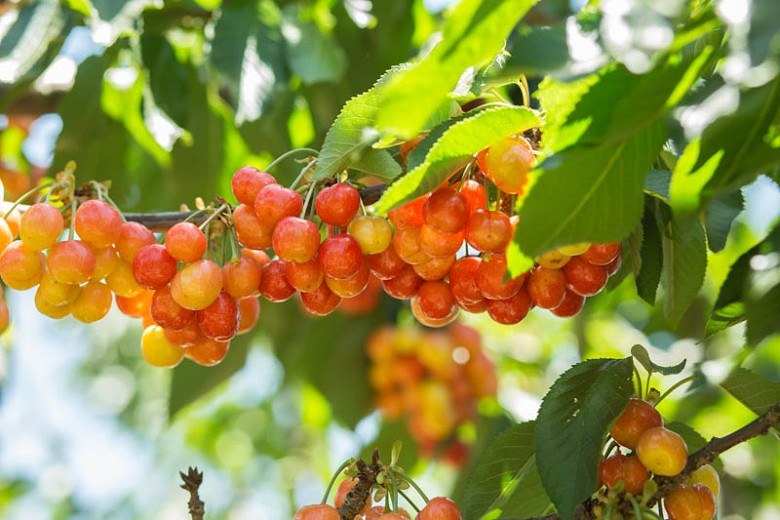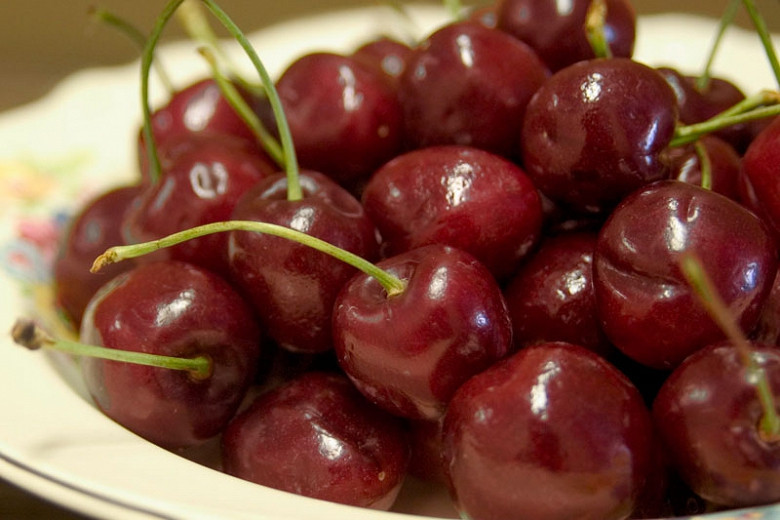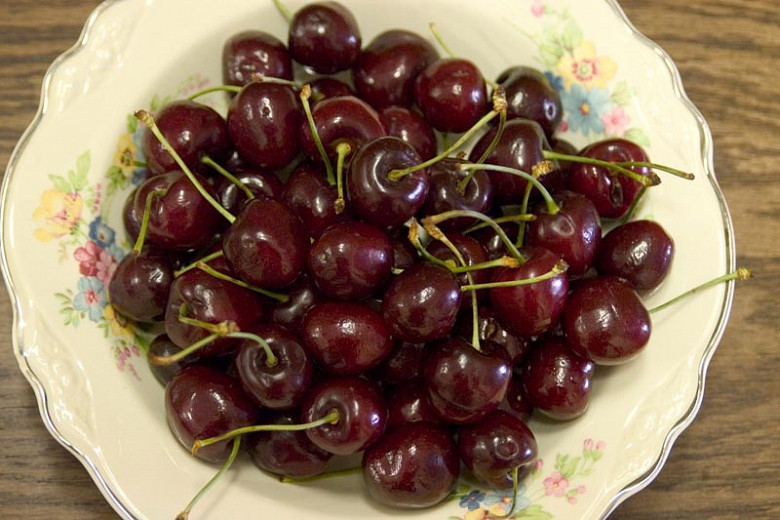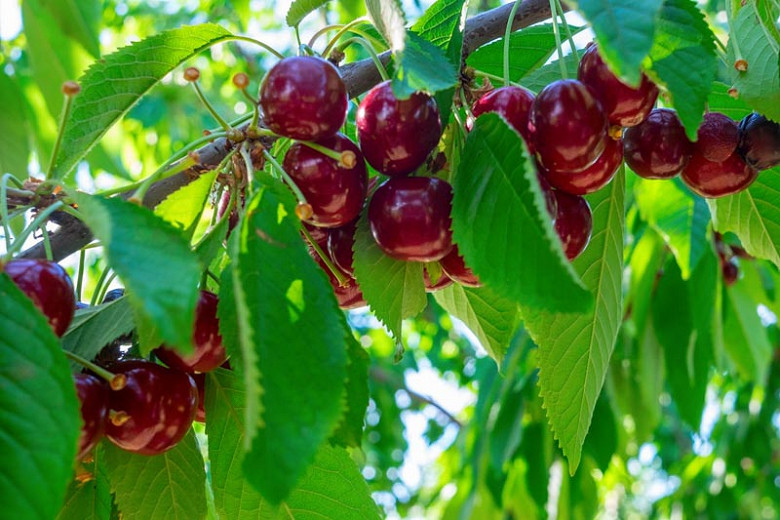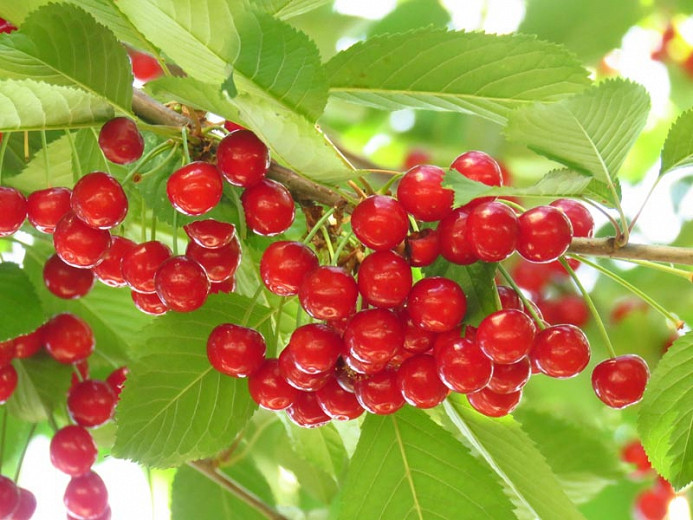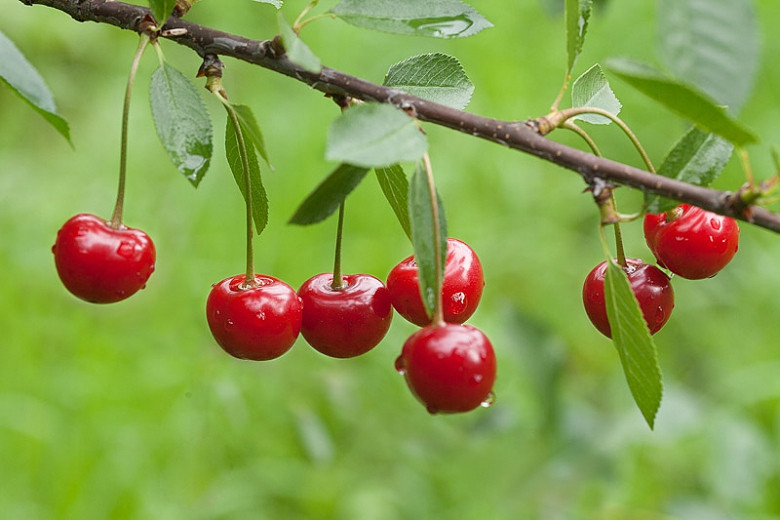Prunus avium Rainier (Sweet Cherry)
Regarded by many as the best yellow cherry, Prunus avium 'Rainier' is a large and vigorous cherry tree of pyramidal habit. In mid-spring, it boasts an abundance of sweetly scented white flowers clustered along the branches. They are followed by a generous crop of very large, golden-yellow cherries with a showy red blush in early summer. Their creamy-white flesh is firm, very juicy, and exceptionally sweet with very high sugar content. They are excellent for eating fresh, canning, or preserves. Its spreading canopy is adorned all summer long with smooth, lustrous, dark green leaves, which turn bronze and golden-yellow in fall. Requires cross-pollination with a compatible variety with the same bloom time such as Bing or Stella for best production. A popular, prolific, and heavy-bearer cherry variety.
- Grows up to 20-30 ft. tall and wide (6-9 m) at maturity. Easy to prune to under 10 feet tall.
- Performs best in full sun in moist, relatively fertile, well-drained soils. Sweet cherries are best suited to fan-training, so they can be netted against bird damage and protected from frosts.
- This cherry tree has a chill hours' requirement of 700 (hours of temperatures below 45ºF (7ºC) in the winter for their buds to open in the spring)
- Train fan-trained trees in spring. Prune established fans and carry out routine pruning on established cherry trees when harvesting the fruits in summer. Dead, weak, or unnecessary branches can be pruned annually in late winter or early spring. Otherwise, little or no pruning is needed.
- Protect from birds that damage buds and eat the fruit. May suffer from aphids, caterpillars, leaf-mining moths, winter moth caterpillars, silver leaf, bacterial canker, and blossom wilt.
- Propagate by chip budding or grafting on clonal rootstock for fruit.
- Toxic to dogs, toxic to cats, toxic to horses.
- Prunus avium species is native to Asia and Europe.
- Find where this species is invasive in the United States.
- Discover beautiful U.S. native plant alternatives.
Requirements
| Hardiness | 5 – 9 |
|---|---|
| Heat Zones | 1 – 8 |
| Climate Zones | 2, 2A, 2B, 6, 7, 8, 9, 14, 15 |
| Plant Type | Fruit, Trees |
| Plant Family | Prunus – Fruit Trees, Cherries |
| Exposure | Full Sun |
| Season of Interest | Spring (Mid)Summer (Early) |
| Height | 20' – 30' (6m – 9m) |
| Spread | 20' – 30' (6m – 9m) |
| Water Needs | Average |
| Maintenance | Low |
| Soil Type | Chalk, Clay, Loam, Sand |
| Soil pH | Acid, Alkaline, Neutral |
| Soil Drainage | Moist but Well-Drained, Well-Drained |
| Characteristics | Fragrant, Showy |
| Attracts | Birds, Butterflies |
| Garden Uses | Beds and Borders, Wall-Side Borders |
| Garden Styles | Informal and Cottage, Prairie and Meadow, Traditional Garden |
